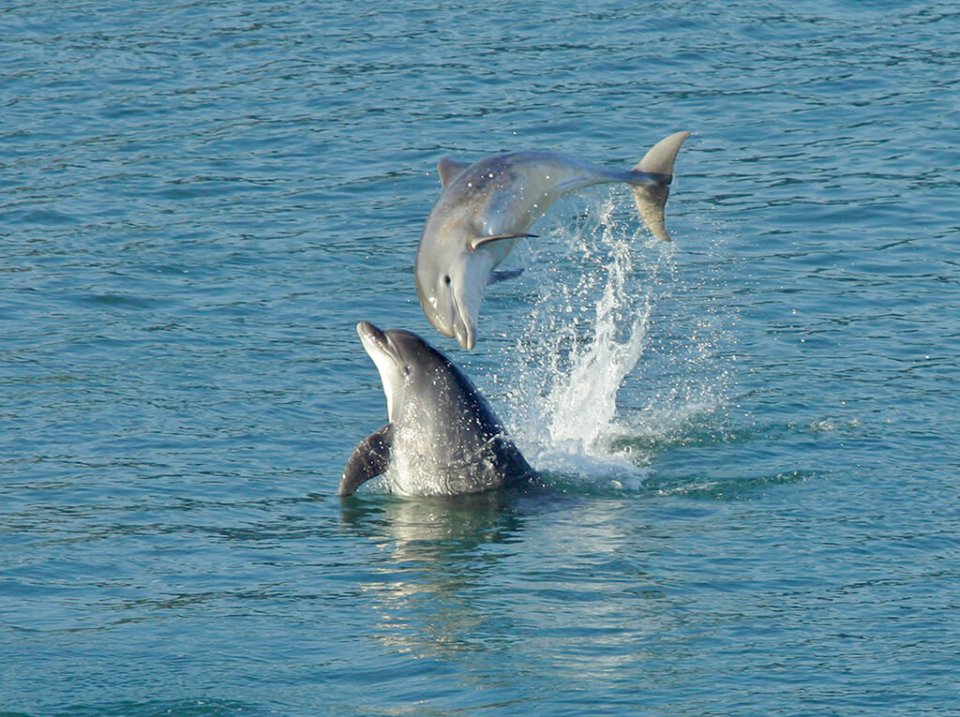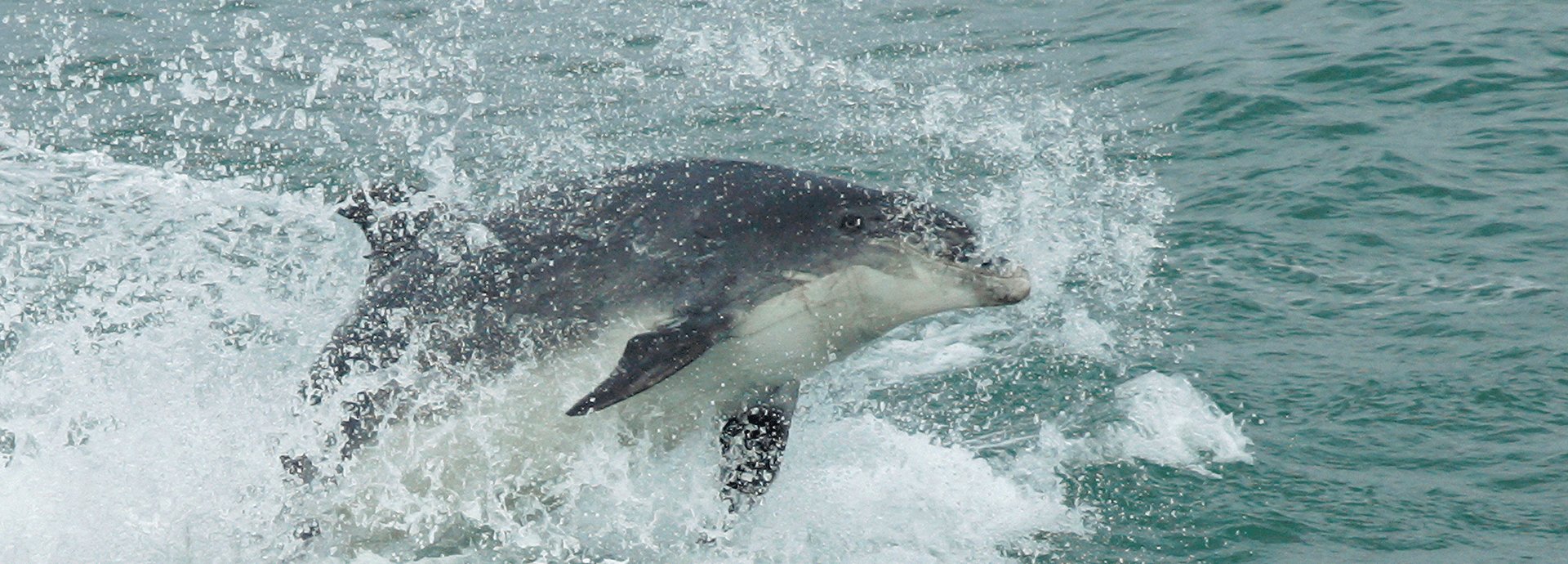Bottlenose dolphin – Tursiops truncatus
The bottlenose dolphin is a marine mammal with a worldwide distribution throughout the world’s tropical and temperate seas. They have a near-global distribution (except the polar regions) and are widely distributed in North Atlantic, West African, Mediterranean and UK waters (but are scarce in the southern North Sea).
There are two main areas of UK territorial waters where there are semi-resident groups of bottlenose dolphins, in Cardigan Bay and the Moray Firth. Although overall population estimates do not exist, studies indicate a resident population of 130 dolphins in the Moray Firth, whilst the population in Cardigan Bay has been variously estimated at 130-350 bottlenose dolphins. Neither population is closed, and individuals may join up for periods of time from elsewhere. The actual number of bottlenose dolphins that use Pen Llŷn a’r Sarnau SAC is not currently known. Between 1989 and 1998 there were about 90 sightings of bottlenose dolphins distributed throughout the whole site, with clusters around the entrance to the Dyfi estuary (25 sightings), the Mawddach estuary (12 sightings), and Tremadog Bay (8 sightings).
Food availability is of critical importance and the SAC contains important potential feeding areas for bottlenose dolphins. They are highly adaptable with respect to diet and feeding strategy being generalist and opportunistic feeders. Observations of live dolphins and stranding records indicate that they eat a wide range of fish, crustaceans and molluscs. Prey species include haddock, saithe, cod, hake, mullet, eels, salmon, trout, bass and sand eels, as well as octopus and other cephalopods. Feeding may involve solitary individuals capturing food independently, or cooperative herding with fish trapped against the water surface, shoreline, or tidal interface.
Calving is known to have taken place within Cardigan Bay and newborn and very young calves have been reported in Cardigan Bay from April to September, suggesting a seasonal pattern to calving. There is a likely preference for more sheltered shallow areas. The strongest social bonds are between mothers and young calves during the suckling and weaning periods. Calves are weaned after about 18 months, but continue to associate strongly with the mother for three to six years until they leave to join mixed groups of other juveniles.
Bottlenose dolphins are a top predator where contaminants accumulate up the food chain and, in the case of organohalides accumulated in fatty tissue, are passed to the calves in the female’s milk. Levels of contaminants in Cardigan Bay as a whole are thought to be generally low, however, high levels of some contaminants, including organochlorine compounds and mercury, have been found in stranded bottlenose dolphins in Cardigan Bay and the source of these contaminants is not known at present. It is not known how current levels of contaminants are affecting the bottlenose dolphins.
One of the other key considerations for the conservation of the bottlenose dolphin within the SAC and wider seas is disturbance by human activity. This may occur within close proximity to the dolphins, such as disturbance by power craft, or at some distance away, for example through use of underwater sonar equipment that has to potential to have a lethal effect on cetaceans. There is a continual increase in the number of power craft of all sizes operating within the SAC and Cardigan Bay as a whole and minimising disturbance to cetaceans, including the bottlenose dolphin will need to be part of the focus of the management of the site. As with the grey seal, other issues relate to entanglement and incidental capture of seals in line and netting and reduction or changes in food availability.

